
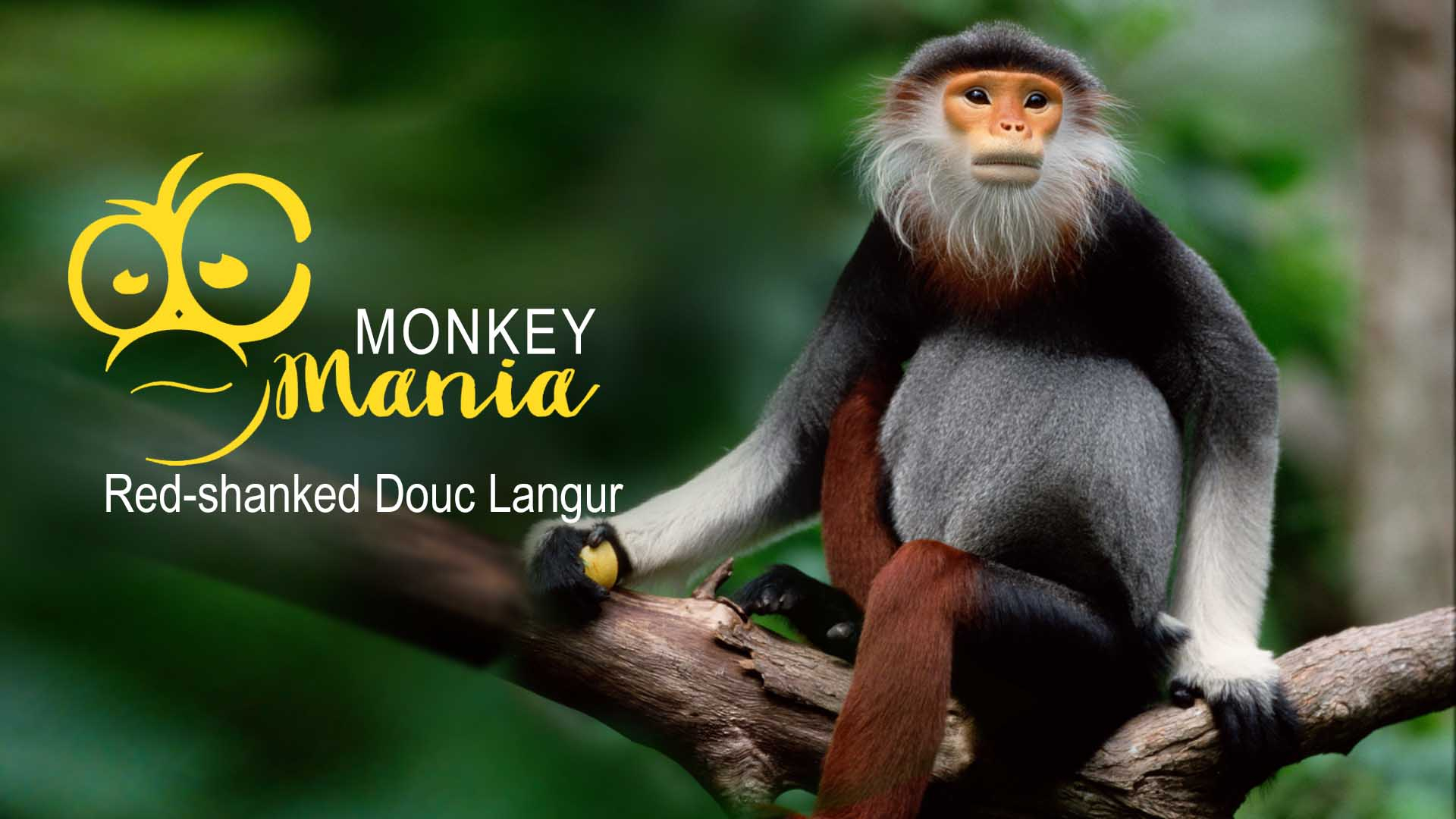
One of the most beautiful primates, red-shanked douc langurs are also referred to as "costumed apes" for their magnificent colors.
The endangered species is endemic to the rain forests of Vietnam and Cambodia. There were also reported sightings in south China's tropical province of Hainan.
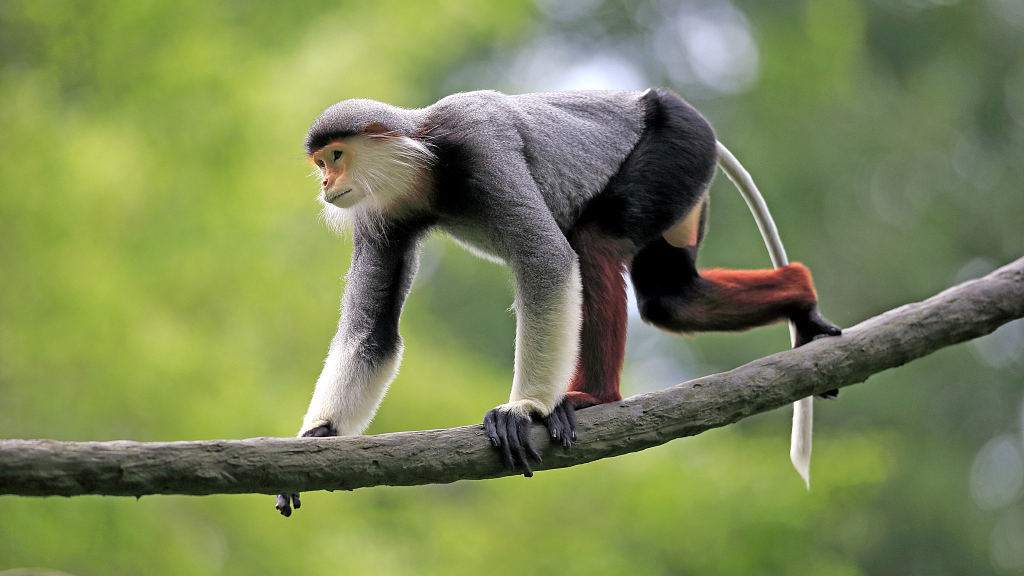
A red-shanked douc langur walks along a branch. /VCG Photo
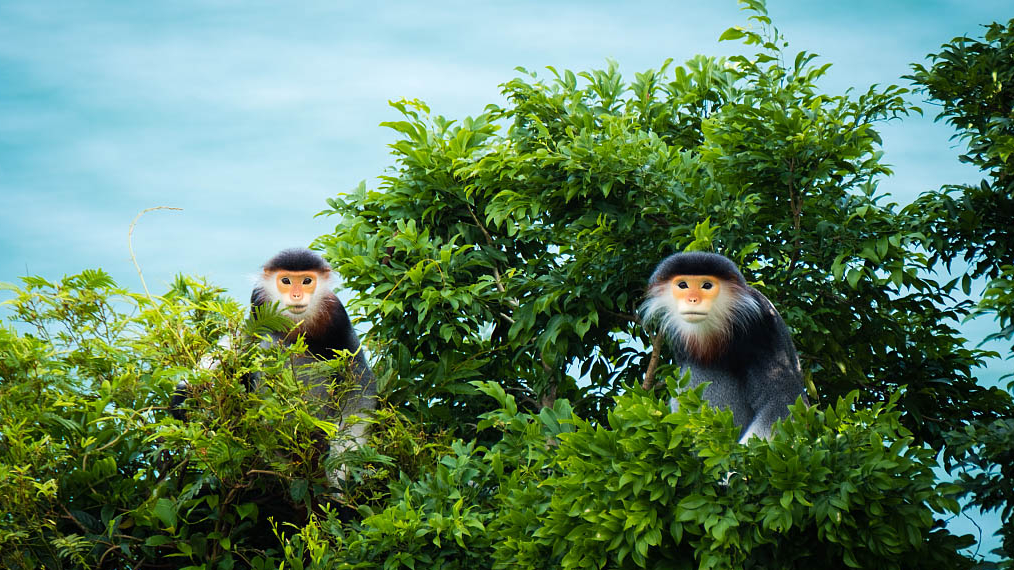
Two red-shanked douc langurs sit in the canopy of a tree. /VCG Photo
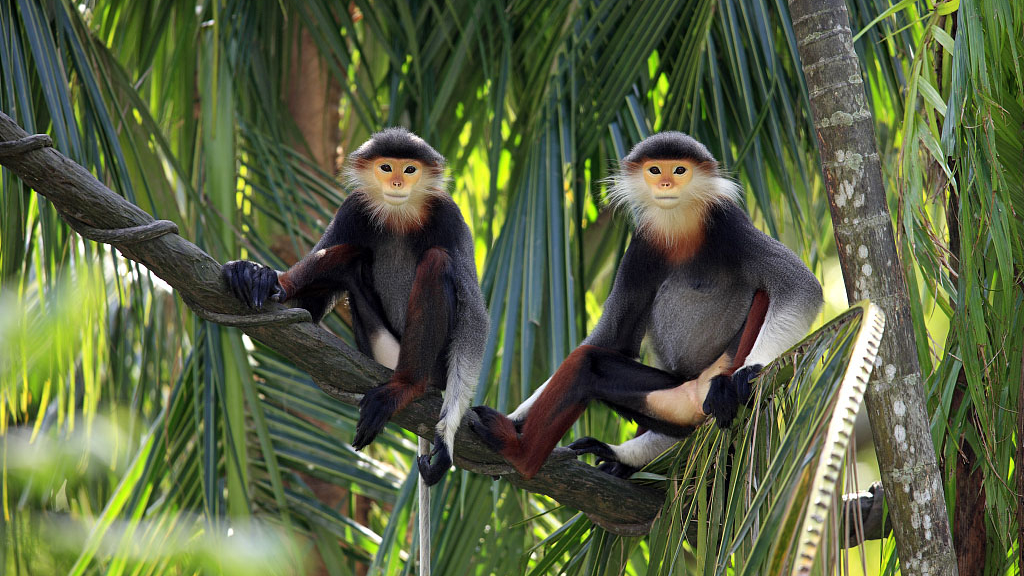
The two red-shanked douc langurs sit on a branch. /VCG Photo
Growing up to around 60 centimeters in body length, the red-shanked douc langur has a tail that can be the same length as its body.
This unique animal moves around on the canopies of trees, and almost never descend to the ground. Though their potbellies would suggest clumsiness, the red-shanked douc langur can jump very gracefully from branch to branch.
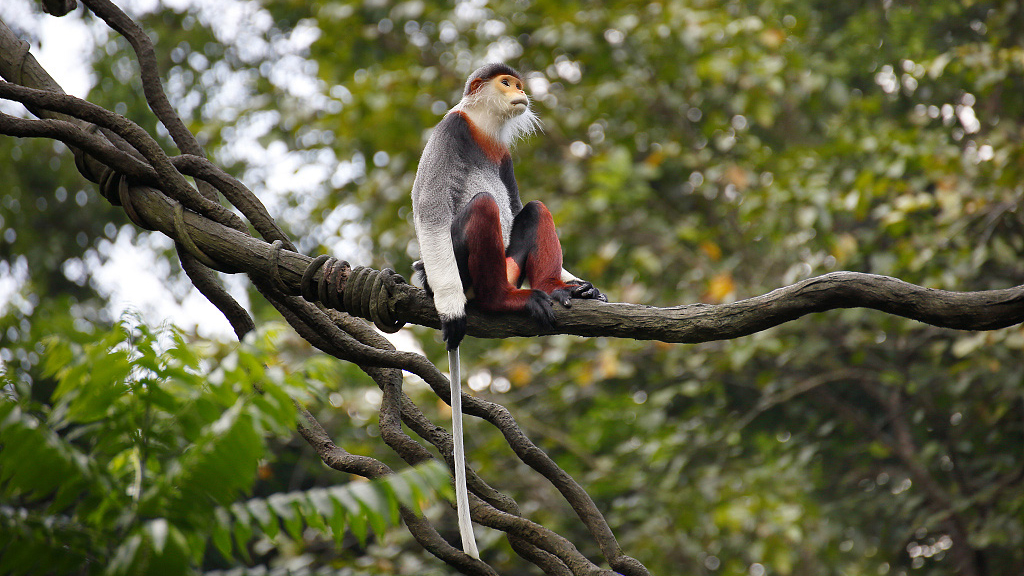
A red-shanked douc langur is in a daze on a branch. /VCG Photo
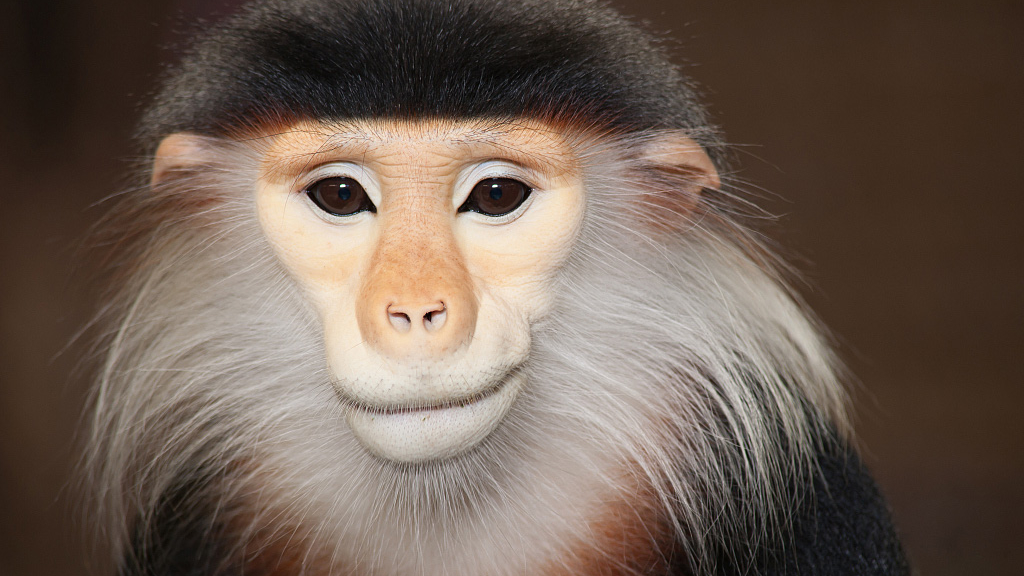
Facial features of a red-shanked douc langur. /VCG Photo
Just like other langurs whose primary diet consists of leaves, douc langurs also eat a large amount of leaves and have different sacs in their stomach to help digest the fiber.
Apart from funny behaviors like burping and dozing that red-shanked douc langurs exhibit in their daily life, they have another interesting display directed toward the opposite sex right before mating: Both males and females drop their jaw forward, lift their eyebrows up then down, then shake their head.
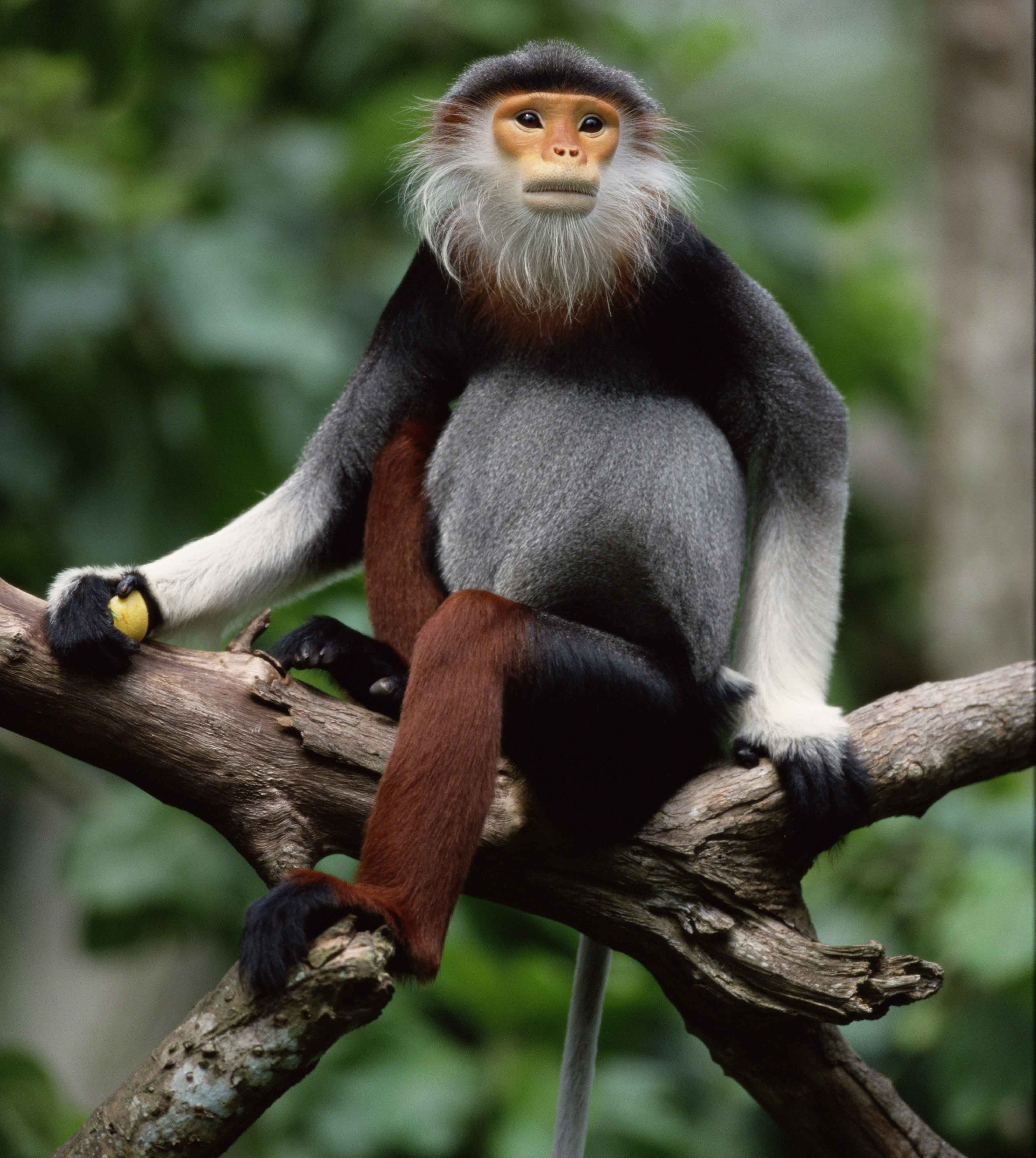
The red-shanked douc langur's favorite food is leaves but it also eats lots of fruits. /VCG Photo
Females usually give birth to only one child at a time between February and June, when fruits are plentiful. It was observed that an infant can help deliver itself by pulling on the mother's fur once its arms are free.
(Cover image designed by CGTN's Li Yueyun.)
(If you want to contribute and have specific expertise, please contact us at nature@cgtn.com.)

Copyright © 2018 CGTN. Beijing ICP prepared NO.16065310-3
Copyright © 2018 CGTN. Beijing ICP prepared NO.16065310-3